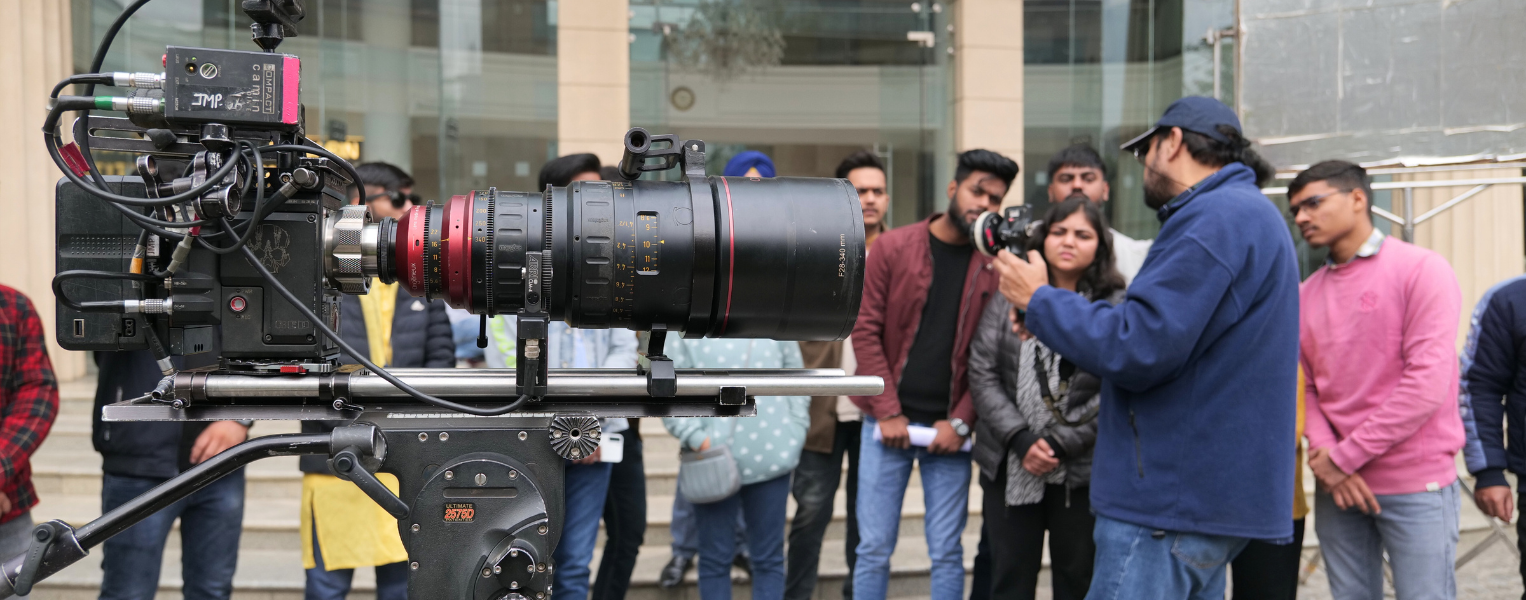
In the vast landscape of visual storytelling, two titans stand tall, each with its unique set of skills and artistic perspectives – Cinematography and Videography. These realms, although closely related, diverge in methodologies, techniques, and the narratives they weave. This exploration aims to dissect the intricacies of cinematography and videography, shedding light on their distinctive roles in the world of visual storytelling.
Cinematography, often hailed as the art and science of capturing moving images for films, transcends mere recording. It involves crafting visual narratives through meticulous attention to camera angles, lighting, composition, and movement. At the helm of this creative process are cinematographers, also known as directors of photography (DP), who shape the visual language of the film industry.
In contrast, videography involves capturing footage without significant influence over the location, art direction, or overall ambiance of a scene. Videographers document a range of events, from interviews, sports, and conferences to weddings. While cinematographers embark on crafting cinematic epics, videographers navigate the real-time documentation of diverse occasions.
Cinematography: It revolves around the art of storytelling through precisely composed shots that utilize lighting, framing, and camera motion to evoke emotions and captivate viewers. Consider the iconic scene in "Shawshank Redemption" where Andy embraces freedom in the rain – cinematography transforms raindrops into a metaphor for triumph, immersing the audience in his liberation.
Traditional vs. Modern Storytelling:Storytelling techniques have evolved significantly over time, with traditional storytelling often relying on oral narratives, folklore, and mythologies passed down through generations. In contrast, modern storytelling utilizes a wide array of media such as literature, film, television, and digital platforms to convey narratives. The shift from traditional to modern storytelling techniques has allowed for greater accessibility and variation in storytelling, catering to diverse audience preferences and technological advancements.
Cultural Influence on Storytelling Techniques: Cultural diversity greatly impacts storytelling techniques. Different cultures have unique storytelling traditions, styles, and themes that reflect their values, beliefs, and histories. For instance, African storytelling often involves call-and-response, interactive elements, and emphasis on communal participation, while Japanese storytelling may incorporate symbolism, silence, and a focus on subtlety. Understanding the cultural influence on storytelling techniques not only enriches the audience's experience but also promotes inclusivity and global appreciation of narratives.
Videography:Taking a documentary or journalistic approach, videography focuses on recording events as they unfold. It prioritizes the actuality of the moment over a carefully crafted narrative. From vlogs showcasing daily escapades to wedding videography preserving life-changing moments, these videos aim to capture the authenticity of reality, allowing viewers to experience events firsthand.
Cinematography:Cinematographers often employ cinema cameras tailored exclusively for filmmaking. These cameras boast high-resolution imagery, large sensors, and advanced functions designed for the intricacies of the cinematic world. The equipment extends to specialized cinema camera lenses and professional lighting setups, essential for bringing grandiose scenes to life.
Videography: Videographers frequently opt for DSLR or mirrorless cameras, providing a balance between high-quality video recording and the versatility of still photography. These cameras, while not as specialized as cinema cameras, offer flexibility and convenience for a variety of videography applications.
Professional Settings:
In professional settings, the distinctions between different types of equipment can significantly impact productivity and efficiency. For instance, in the medical field, the distinctions between various types of medical imaging equipment, such as X-ray machines, MRI machines, and CT scanners, are crucial for accurate diagnostics and patient care. Understanding the distinctions between these types of equipment enables healthcare professionals to utilize the most effective tool for a specific medical imaging need.
Lighting Equipment:
Lighting is an indispensable aspect of cinematography, and the selection of lighting equipment can dramatically alter the mood and atmosphere of a scene. Cinematographers utilize various tools such as key lights, fill lights, and practical lights to sculpt the illumination and shadow play in a frame. Moreover, the use of modifiers like softboxes, diffusers, and gels allows for precise control over the quality and color of light, enhancing the visual narrative.
Color Grading: Color grading is a fundamental component of post-production that significantly influences the mood and atmosphere of a film. Through color grading, cinematographers have the ability to evoke specific emotions and create visual contrasts that enhance the storytelling. The manipulation of color palettes can shift the audience's perception of a scene, from warm and inviting to cold and foreboding. By adjusting contrasts, shadows, and highlights, cinematographers can emphasize certain elements within the frame, guiding the viewer's focus and enhancing the overall visual impact of the film.
Visual Effects:
The integration of visual effects in post-production allows cinematographers to elevate their storytelling by adding elements that were not present during the initial shoot. Contrasts can be created through the seamless incorporation of CGI elements into live-action footage, allowing for the portrayal of fantastical worlds, larger-than-life characters, and awe-inspiring sequences. Through visual effects, cinematographers can juxtapose the ordinary with the extraordinary, creating striking contrasts that captivate audiences and bring imaginative visions to fruition.